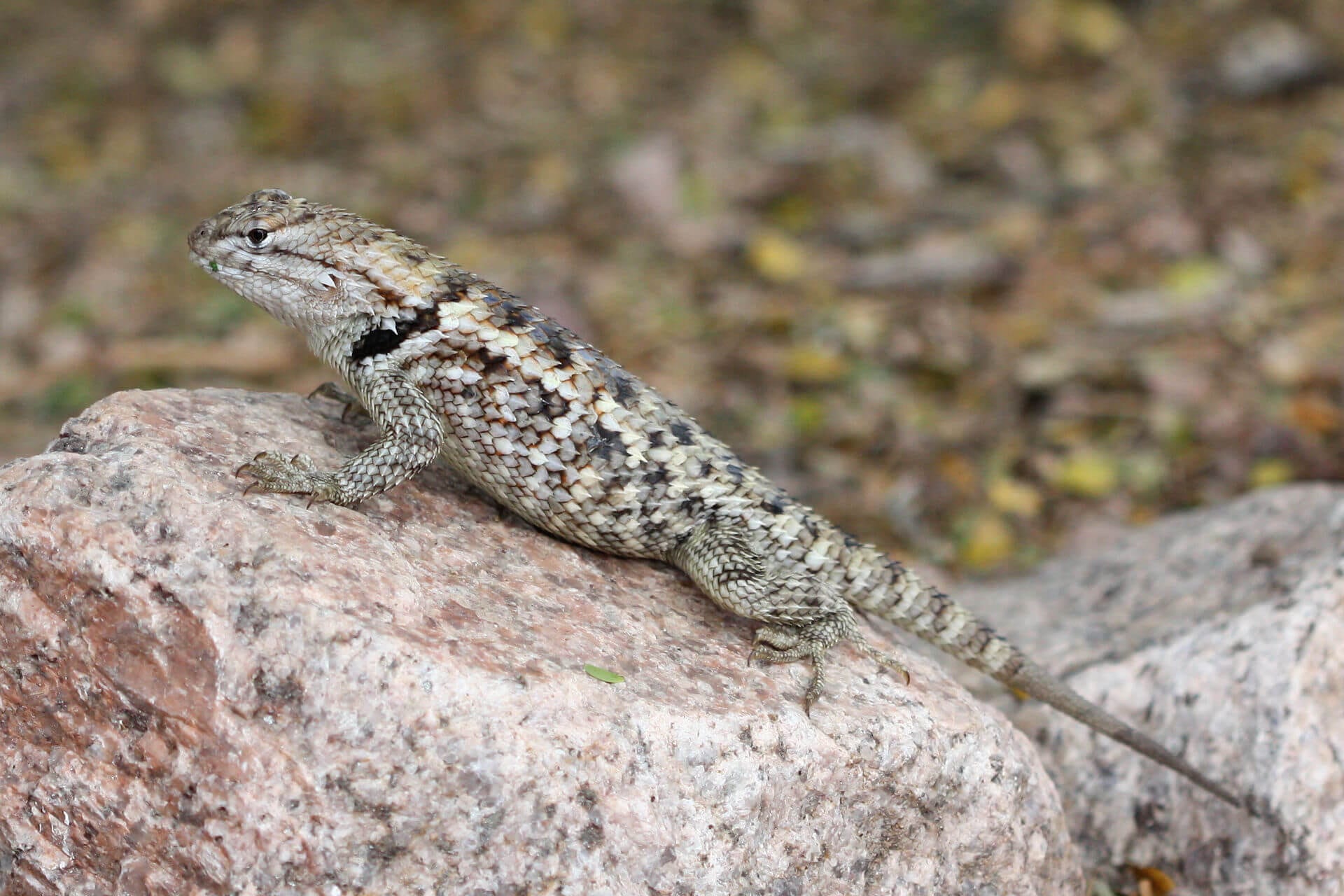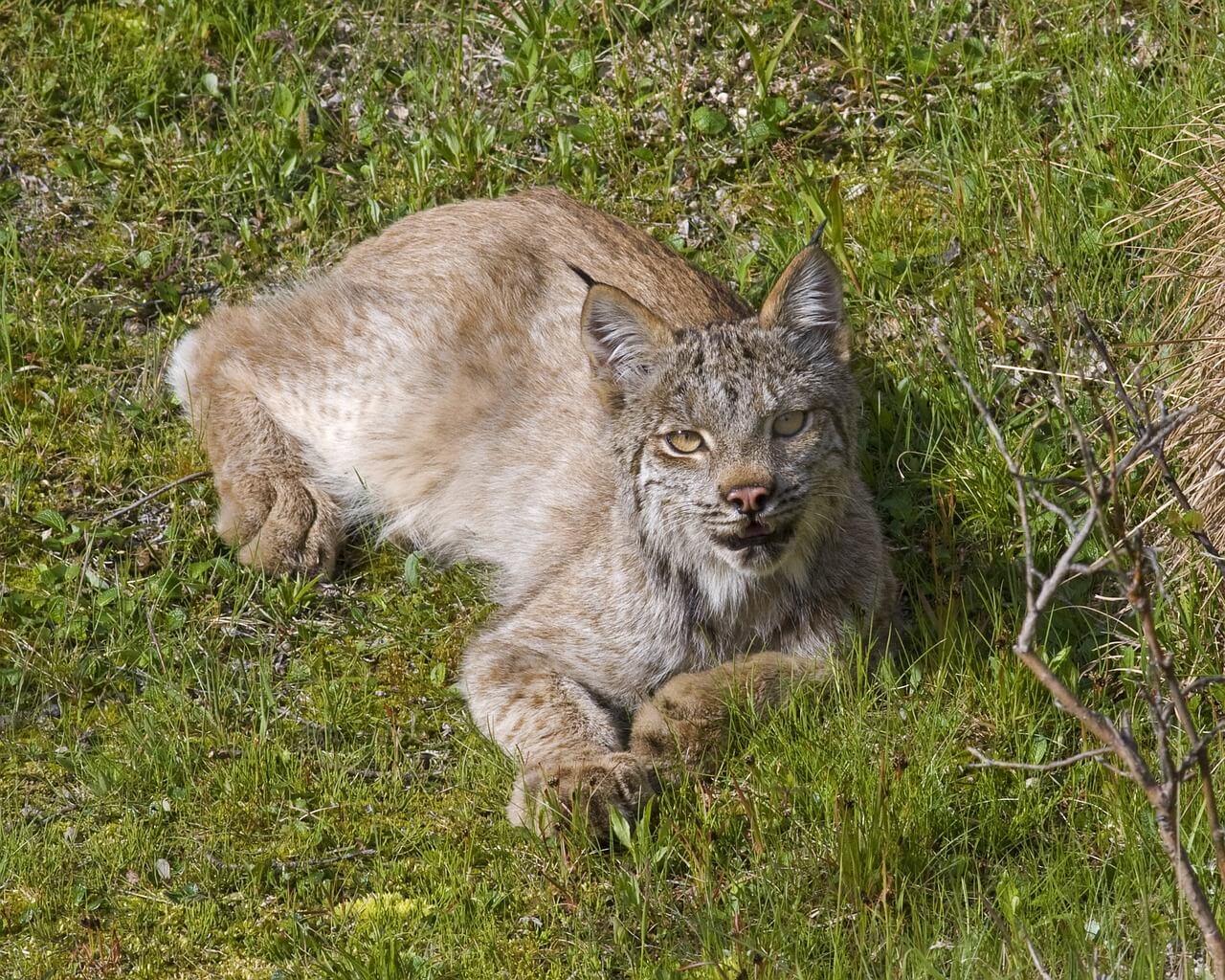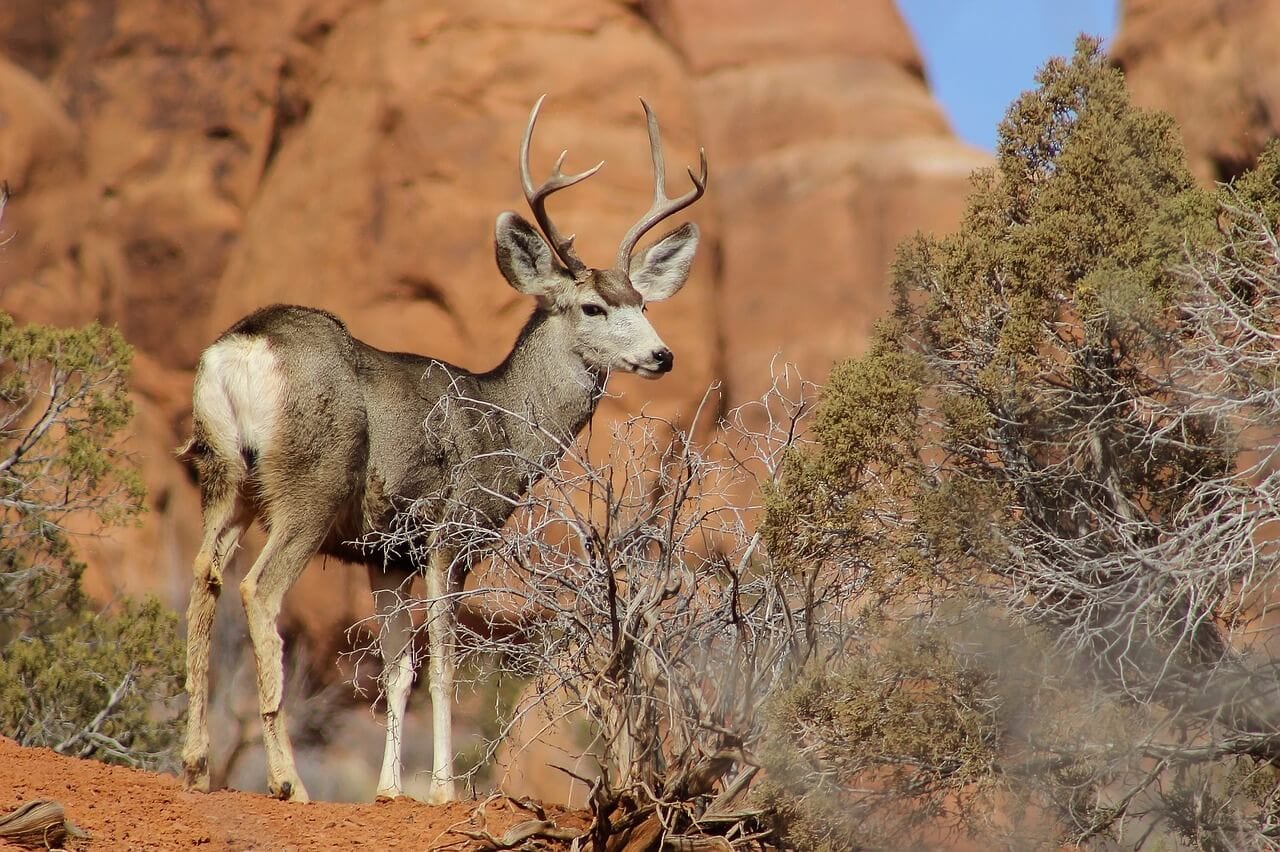Situated on the banks of the Colorado River in eastern Utah, Arches National Park is a nature-lovers dream. Filled with an impressive array of natural geological wonders and fascinating wildlife species, this is one of the most noteworthy parks in the entire United States.
It doesn’t rain very much in Arches National Park, so it is a great place to see animals that have adapted to arid conditions. We’ll detail some of the park’s most interesting animals and provide a few tips for observing as many as you can below.
The Ungulates of Arches: Bighorn Sheep and Deer
Despite being an arid habitat, two impressive hooved mammals call the park home.
Arches National Park is home to mule deer and bighorn sheep. Both of these peaceful herbivores play important roles in the park’s ecosystems and serve as prey for the park’s predators. They’re also beautiful species, which are remarkable to behold in their natural habitats.

But unfortunately, most visitors only get the chance to see one of these handsome species. Mule deer are quite numerous in the park, and they often stroll within yards of the visitor center and other buildings in the park. They will slip away if approached closely, but they usually don’t mind human observers who keep their distance.
On the other hand, the park’s bighorn sheep are very wary animals, who visitors rarely get the opportunity to see. Those visitors who do see these animals only get to do so from a great distance. Nevertheless, it doesn’t hurt to keep your eyes peeled for bighorn sheep while exploring the park’s upper elevations.
Snakes and Lizards: Denizens of the Desert
Like most desert habitats, lizards and snakes are some of the most abundant animals inhabiting Arches National Park.
Arches National Park is home to an array of lizard and snake species, including several that are very easy to spot in the desert landscape.

The desert spiny lizard and northern whiptail are two of the most commonly seen lizard species. You can often see them basking on rocks during the morning during the summer, before temperatures peak. The western collared lizard is also quite common in the park, and it is one of the more beautiful and colorful species that calls the region home.
A variety of snakes live within the park too, and most are harmless to humans. Because they tend to be nocturnal and secretive, they’re rarely easy to find. There is one venomous snake found in the park – the midget faded rattlesnake. However, these snakes avoid most encounters with humans, so they shouldn’t present a threat to visitors who watch where they place their hands and feet.
The Birds of Arches National Park
The birds of Arches National Park are some of the most visible animals that call the park home.
Several bird species live in Arches National Park – scientists have documented 273 different species, but several other species have surely slipped under the radar. But regardless of the number of species that live within the park’s borders, there are certainly plenty of fantastic birds for visitors to enjoy.

Some of the most common birds in Arches National Park include ravens, juncos, swifts and white-crowned sparrows. Additionally, you can often see turkey vultures circling high above the ground. Peregrine falcons are occasionally seen hunting for other birds near steep cliff faces, but they’re relatively rare, so it is only the luckiest visitors who get to observe these birds in their natural habitats.
Note that different bird species tend to inhabit different habitats within the park. For example, scrub and pinyon jays are rarely seen far from the park’s pinyon-juniper forests, while the park’s western meadowlarks are usually confined to the park’s upland grassy areas.
Park Predators: Mountain Lions, Bobcats and More
Like any other national park, Arches National Park is home to several predators.
A variety of predators live in Arches National Park and help to keep the resident herbivore populations in check. We’ve discussed some of the park’s predators – including rattlesnakes and birds of prey – earlier, but these are all relatively small predators, who subsist on rodents and other small animals.

Mountain lions and bobcats are two of the most notable predators that inhabit the park. Mountain lions primarily feed on the park’s mule deer, while bobcats feed heavily on the park’s rabbits and birds. Unfortunately, both of these species are secretive, so sightings are rare.
Coyotes also inhabit the park, and visitors occasionally have the chance to see them. They’re most active during low-light conditions, and they can occasionally be heard howling at night. Additionally, black bears pass through the park at times, but they’re secretive. This makes sightings rare.
Wildlife Viewing Tips: Making the Most of Your Visit
Embrace the following tips and tricks to make the most of your Arches National Park adventure.
Arches National Park hosts a variety of wildlife species, but that doesn’t mean it’s always easy to find or observe them. Hopefully, by following the advice provided below, you’ll be able to increase your chances of seeing several animals.
- Bring a good pair of binoculars. Many of the animals you’ll have the chance to see at Arches National Park avoid people. Accordingly, you’ll want to bring a pair of binoculars, so you can still see the animals relatively well.
- Explore the park during the cool hours of the morning and evening. Like most other desert habitats, Arches National Park is quite hot during the summer. Most animals will avoid being active during the middle of the day, so be sure to spend some time looking for animals around dawn and dusk.
- Discuss recent sightings with the park staff. The park’s staff are a great resource for wildlife watchers, as they’ll often understand the habits and behavior of the animals in the park. Additionally, they’ll often be able to tell you the places in which some of the park’s animals have been recently spotted.
- Bring a field guide to the park’s birds. Birds are some of the most commonly seen wildlife species in Arches National Park, so be sure you bring a field guide. This way, you’ll be able to tell which species you are looking at.

Tell Us About Your Experiences!
Arches National Park is certainly among the best places to enjoy unusual rock formations and incredible wildlife species. Just be sure that you bring plenty of water to keep you hydrated during your desert adventure and embrace the tips provided above to help ensure you see as many critters as possible.
Have you ever visited Arches National Park before? Tell us all about it! We’d love to hear about the animals you saw, as well as the general portion of the park where you encountered them. Your experiences may help other readers during their Arches National Park vacation.






![Red Angus Closeup of a beautiful Red Angus cowPhoto by: U.S. Department of Agriculture [pubic domain]https://creativecommons.org/licenses/by/2.0/](https://animals.net/wp-content/uploads/2020/03/Red-Angus-4-100x75.jpg)

